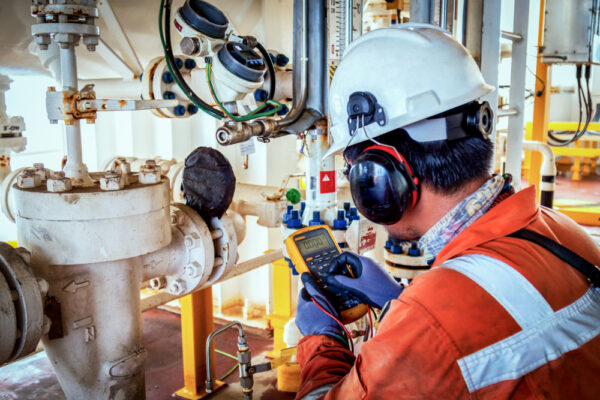Roar Solutions Fundamentals Explained
Roar Solutions Fundamentals Explained
Blog Article
The smart Trick of Roar Solutions That Nobody is Discussing
Table of ContentsThe Best Guide To Roar SolutionsRoar Solutions Fundamentals Explained3 Easy Facts About Roar Solutions Explained
In such an ambience a fire or surge is possible when three basic conditions are met. This is commonly described as the "dangerous location" or "burning" triangle. In order to shield installments from a possible explosion an approach of analysing and classifying a possibly harmful area is required. The function of this is to make sure the correct selection and installation of equipment to ultimately avoid a surge and to make sure security of life.
(https://www.sooperarticles.com/authors/794854/thomas-carrillo.html)
No tools should be mounted where the surface area temperature of the devices is more than the ignition temperature of the offered risk. Below are some typical dust harmful and their minimum ignition temperature. Coal Dust 380C 225C Polythene 420C (melts) Methyl Cellulose 420C 320C Starch 460C 435C Flour 490C 340C Sugar 490C 460C Grain Dust 510C 300C Phenolic Resin 530C > 450C Aluminium 590C > 450C PVC 700C > 450C Soot 810C 570C The likelihood of the risk being present in a focus high enough to create an ignition will differ from place to place.
In order to identify this risk a setup is split into locations of threat relying on the amount of time the unsafe exists. These locations are referred to as Zones. For gases and vapours and dirts and fibers there are three zones. Area 0 Area 20 An unsafe atmosphere is extremely likely to be present and may be existing for extended periods of time (> 1000 hours per year) and even continuously Zone 1 Area 21 An unsafe ambience is feasible but not likely to be existing for lengthy periods of time (> 10 450 C [842 F] A classification of T6 implies the minimum ignition temperature level is > 85 C [185 F] Unsafe area electrical tools possibly created for use in greater ambient temperatures. This would certainly showed on the score plate e.g. EExe II C T3 Ta + 60C( This means at 60C ambient T3 will certainly not be surpassed) T1 T1, T2, T3, T4, T5, T6 T2 T2, T3, T4, T5, T6 T3 T3, T4, T5, T6 T4 T4, T5, T6 T5 T5, T6 T6 T6 A T Course score of T1 implies the optimum surface area temperature level generated by the tool at 40 C is 450 C. Assuming the linked T Class and Temperature level rating for the devices are appropriate for the location, you can always utilize an instrument with an extra rigid Department rating than needed for the location. There isn't a clear solution to this inquiry regrettably. It actually does depend upon the kind of equipment and what repairs require to be lugged out. Equipment with details examination procedures that can not be carried out in the field in order to achieve/maintain 3rd party ranking. Need to come back to the manufacturing facility if it is prior to the devices's solution. Area Repair Work By Authorised Employee: Complicated testing might not be called for however certain treatments may need to be complied with in order for the tools to maintain its third celebration ranking. Authorised personnel need to be employed to carry out the job appropriately Repair should be a like for like replacement. New element should be taken into consideration as a straight replacement calling for no special screening of the devices after the repair is complete. Each tool with a dangerous ranking need to be examined independently. These are described at a high degree listed below, however, for more thorough information, please refer straight to the standards.
Things about Roar Solutions
The tools register is a detailed data source of tools documents that consists of a minimum collection of fields to identify each item's area, technological specifications, Ex lover category, age, and ecological information. This information is important for monitoring and handling the devices successfully within harmful locations. In comparison, for periodic or RBI tasting examinations, the quality will be a mix of Thorough and Close evaluations. The ratio of Detailed to Shut evaluations will be figured out by the Equipment Threat, which is evaluated based upon ignition risk (the possibility of a resource of ignition versus the likelihood of a flammable ambience )and the unsafe location classification
( Zone 0, 1, or 2). This variation will additionally affect the resourcing needs for job prep work. As soon as Great deals are defined, you can create tasting plans based on the sample size of each Great deal, which describes the variety of random devices things to be checked. To determine the called for sample size, 2 navigate to these guys aspects need to be evaluated: the size of the Whole lot and the category of evaluation, which indicates the degree of effort that must be used( decreased, regular, or enhanced )to the assessment of the Lot. By integrating the category of assessment with the Whole lot dimension, you can after that establish the suitable denial requirements for an example, indicating the allowed number of malfunctioning products found within that example. For even more details on this process, please describe the Power Institute Guidelines. The IEC 60079 conventional advises that the optimum interval between examinations need to not go beyond three years. EEHA examinations will also be conducted beyond RBI projects as part of set up maintenance and devices overhauls or repairs. These inspections can be credited towards the RBI sample sizes within the influenced Great deals. EEHA assessments are carried out to identify mistakes in electric tools. A weighted scoring system is important, as a single tool may have numerous mistakes, each with differing levels of ignition risk. If the consolidated rating of both examinations is less than two times the mistake rating, the Whole lot is regarded acceptable. If the Lot is still thought about inappropriate, it must undertake a complete evaluation or justification, which may trigger stricter assessment protocols. Accepted Whole lot: The sources of any mistakes are identified. If an usual failure setting is located, additional equipment may require examination and repair. Mistakes are identified by intensity( Security, Honesty, Home cleaning ), making certain that urgent concerns are assessed and addressed quickly to alleviate any effect on security or procedures. The EEHA data source ought to track and record the lifecycle of mistakes together with the corrective activities taken. Applying a durable Risk-Based Inspection( RBI )technique is important for making certain compliance and security in taking care of Electrical Tools in Hazardous Areas( EEHA) (electrical refresher course). Automated Mistake Rating and Lifecycle Administration: Easily handle faults and track their lifecycle to enhance evaluation precision. The intro of this support for risk-based examination further reinforces Inspectivity's placement as a best-in-class remedy for governing conformity, as well as for any type of asset-centric assessment usage instance. If you have an interest in discovering more, we welcome you to ask for a demo and find how our solution can change your EEHA management processes.
Our Roar Solutions PDFs

In regards to eruptive risk, a harmful area is an environment in which an explosive atmosphere is present (or might be expected to be existing) in quantities that call for special precautions for the building, installation and use equipment. high voltage courses. In this short article we check out the obstacles faced in the office, the threat control procedures, and the required expertises to function safely
It issues of contemporary life that we make, save or take care of an array of gases or fluids that are deemed flammable, and a series of dusts that are deemed combustible. These materials can, in specific conditions, form explosive ambiences and these can have significant and terrible repercussions. The majority of us are acquainted with the fire triangle get rid of any kind of among the 3 aspects and the fire can not happen, but what does this mean in the context of unsafe areas? When damaging this down right into its simplest terms it is basically: a combination of a particular amount of release or leak of a particular substance or material, mixing with ambient oxygen, and the existence of a resource of ignition.
In a lot of instances, we can do little regarding the degrees of oxygen in the air, yet we can have considerable impact on resources of ignition, as an example electric tools. Dangerous areas are documented on the hazardous location category illustration and are determined on-site by the triangular "EX" indication. Here, among other crucial details, zones are divided into 3 kinds depending on the threat, the likelihood and period that an explosive environment will exist; Area 0 or 20 is deemed the most unsafe and Zone 2 or 22 is regarded the least.
Report this page